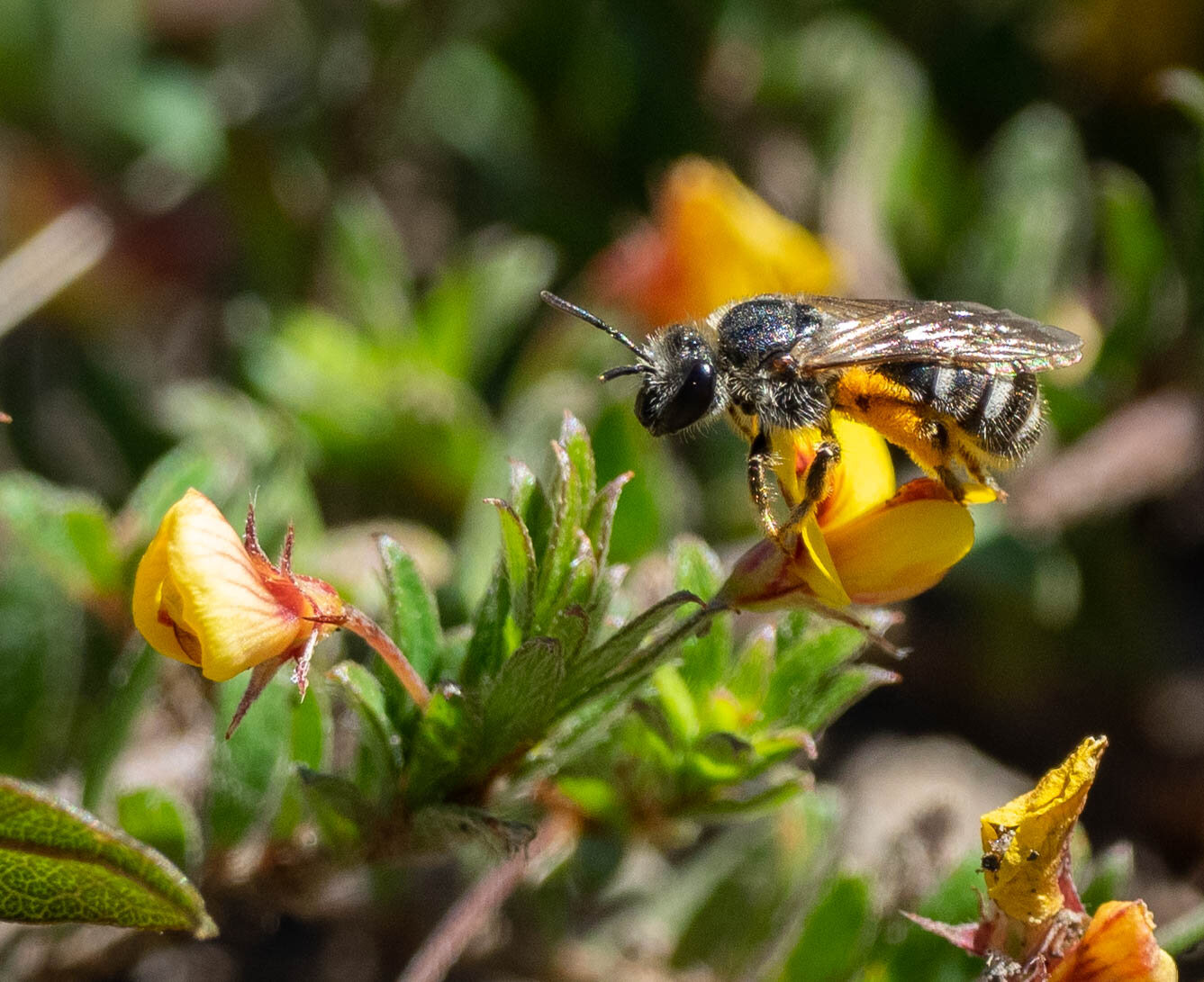Matted Bush-pea survey 15th Oct - report coming soon
Under blue skies today (15th Oct) we gathered in Tathra before heading out to survey the regenerating forest west of the town. Three survey groups of experts and community members worked together to map and count the endangered Matted Bush-pea. We found many healthy plants, flowering and attracting insect visitors.
Thank-you to everyone who took part.
A more detailed report on the survey will be available here very soon.
Pollen-laden native bee working over the tiny flowers of the Matted Bush-pea (Tathra, 15th October, 2019)
Join us in Tathra for a collaborative survey of a special plant
Tuesday 15th October, 2019
Meet at Tathra fireshed for a 10:30 start
Our region is home to many rare and endangered plants and animals. The Matted Bush-pea (Pultenaea pedunculata) is a good example.
The Matted Bush-pea (Pultenaea pedunculata) is a low growing native pea with small yellow flowers. It has regenerated well following the Tathra fire and is currently flowering – making it easier to detect.
Join with local experts including Jackie Miles and Save Our Species staff to search the Tathra bushland for this special plant – found in only three locations in NSW!
Bega Valley Shire Council, as part of its 'Green Shoots' Tathra/Reedy Swamp bushfire recovery program, is coordinating the survey. There are no official records of Matted Bush-pea in the forests west of Tathra so this survey is an excellent opportunity to collect valuable scientific data on the location of this species and help in its conservation.
Everyone is most welcome, so please share this information with interested friends.
Please rsvp to Andrew Morrison at amorrison@begavalley.nsw.gov.au if you would like to attend.
Further reading:
Office of Environment and Heritage website … overview of distribution in NSW and the types of conditions in which the plant grows.
NatureMapr sightings in our region … note that as this plant is endangered, the location details are not publicly displayed. Researchers and natural resource managers can, however, access full details of all sightings.





